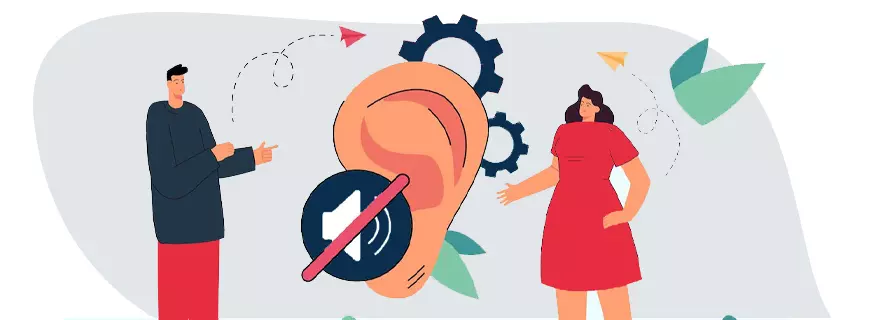
Elements of Nonverbal Messages
The most important thing in communication is to hear what isn’t being said.
– Peter Drucker
Introduction
Nonverbal communication refers to any kind of communication that is neither verbal nor written in nature. Nonverbal communication has a significant effect and influence on the receiver’s ability to decode or comprehend any message sent to him or her.
When you are communicating, your body is sending a message that is as powerful as your words.
Bear in mind throughout our subsequent conversations that our interpretations are but that – common interpretations. (For instance, the one sitting with his or her legs crossed may just be more comfortable in that position and is not feeling closed-minded about the debate.) Additionally, body language may have a variety of meanings across genders and cultures.) However, it is vital to learn how certain actions are often observed, so that we can ensure that our body and tongue are communicating the same message.
Consider the following possibilities for a minute. In each circumstance, what non-verbal cues may you receive? What effect may these non-verbal cues have on the spoken message?
- Your employer invites you to his office for a meeting to discuss a new project. He seems grim, his arms crossed.
- A team member informs you of terrible news while smiling.
- You inform a coworker that you are unable to assist them with a project. They claim that it is OK, but on their way out, they slam your office door shut.
This is the module’s initial objective: to assist you in comprehending how to utilize body language to become a more successful communicator. Another objective, which you will attain with time and experience, is to be able to analyze body language, incorporate it into the message you are getting, and effectively comprehend the information being delivered. With this in mind, let us examine the non-verbal communication components.
Brief check
When verbal and nonverbal messages clash, listeners tend to believe the nonverbal message.
Silent messages
Have you ever walked away from a talk or encounter with someone feeling uneasy or undervalued? You’re not entirely sure what it is, but you know how it feels! Without realizing it, you caught up on the other person’s nonverbal signals: the blank stare, the averted glance, the unenthusiastic tone of voice, and the dismissive shrug. Hmmmm. The person you were chatting with expressed all you needed to hear, yet you left with a sense of dismissive coldness that was effectively concealed below a veneer of civility. With nothing solid to speak of, you conclude that you are most likely being too sensitive. As a result, the matter is disregarded and left unresolved.
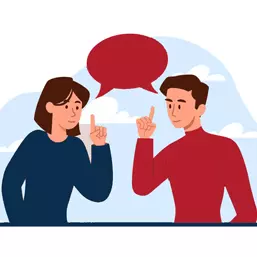
Negative, subtle, and apparently insignificant underlying signals that we are unaware of indicate our genuine emotions. Simply because they are not immediately apparent does not mean they are not detrimental to the person and your firm. They may create significant issues by eroding and infecting an otherwise good self-esteem and impairing performance. They have the potential to spread a nasty virus across your organization, eroding your effectiveness as a leader and undermining morale, team performance, and innovation.
We react to hundreds of nonverbal signals and actions on a daily basis. From our handshakes to our haircuts, nonverbal cues reflect who we are and influence our interactions with others. Regardless of what we believe we are communicating, our words, gestures, and tone of voice might convey an altogether different message. The following strategies may help you communicate more successfully.
To begin, develop an ability to understand nonverbal cues from others. All of these signals have the potential to transmit critical information that cannot be expressed verbally. Keep an eye out for incongruent (disagreeable) behaviour. Words are not enough! Actions speak louder than words! If a person’s statements do not correspond to their nonverbal actions, you should exercise caution. When a communication’s verbal and nonverbal components communicate the same message, the audience believes your message.
Concentrate on your own tone of voice, which carries a lot of information, ranging from excitement to boredom to rage. Begin to become aware of how your tone of voice impacts how people react to you.
Maintain eye contact. When individuals neglect to look others in the eye, it may seem as if they are dodging or concealing something. On the other side, excessive eye contact might seem hostile or menacing.
If you are perplexed by another person’s nonverbal cues, do not be hesitant to inquire. A decent strategy is to restate your perception of what was stated and to request clarification. As an example, “So what you’re saying is…”
Practice. By observing nonverbal behavior and honing your own communication talents, you may significantly increase your communication abilities.
Albert Mehrabian, a psychologist, presented a seminal research titled Silent Messages in 1971. He drew various findings in it concerning how the spoken word is perceived. Although this research has been misquoted several times over the years, its main finding is that 7% of our communication is verbal, 38% is nonverbal, and 55% is via body language. Now, we know that this is not always true. If someone speaks to you in a foreign language, you will comprehend around 93% of what they say. Alternatively, if you are reading a written letter, you are likely to get more than 7% of the content. What this research does demonstrate is that body language is a critical component of our interpersonal communication. With this in mind, let us consider the signals that our bodies are capable of sending.
Brief check
Nonverbal communication includes all unwritten and unspoken messages, intended or not.
Body Language
The study of body movement is referred to as kinesics, and it is concerned with all of the ways in which individuals use their bodies to communicate or to improve their verbal communication. Posture, gestures, facial emotions, and eye contact are all examples of bodily movement.
Posture
The way you hold and move your body—can reveal a great deal about who you are and how you feel. During a discussion, for example, leaning toward or away from someone might communicate your level of attention, attentiveness, or participation. It is possible to communicate a lack of interest or to signify the end of a discussion by turning your back or rising to leave.
The manner in which we stand or sit is important. Consider for a minute the many sorts of postures and the messages that they convey to the viewer.
- Sitting with your shoulders slumped over usually suggests tension or pain. If you’re standing or sitting, leaning back implies that you’re in a casual and easygoing mood.
- Being able to stand ramrod straight implies stiffness and anxiousness in most people. Our arms, legs, feet, and hands in different positions all indicate something.
- Crossed arms and legs are often associated with a closed mentality.
- Fidgeting is often associated with feelings of boredom or uneasiness.
Gestures may be defined as any movement of the hands, fingers, or arms in any direction. For example, open arms may represent honesty and openness.
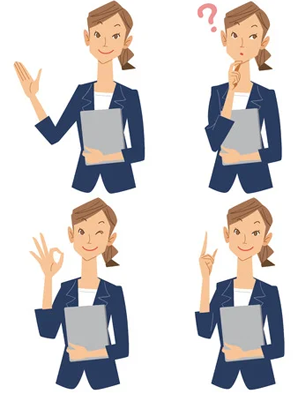
Facial expressions
Facial expressions are the arrangement of facial muscles that are used to send signals to one another. The lips, cheeks, eyes, eyelids, eyebrows, forehead, nose, and chin are among the features covered. There is little doubt that when we connect with people, our faces are among the most scrutinized parts of our bodies, and this is not without cause. The majority of the time, our faces express our internal, emotional experience. For example, smiles and frowns speak a million words and a raised eyebrow can mean inquisitiveness, curiosity, or disbelief. Chewing one’s lips can indicate thinking, or it can be a sign of boredom, anxiety, or nervousness.
Eye contact may also be used to convey a variety of various sorts of signals. In our society, direct eye contact may convey feelings of connection, intimidation, and tenderness, among other things. A diverted or downcast glance, on the other hand, conveys a whole different impression. Our eyes may also convey a sense of power or submissiveness. It is possible to “stare someone down” by maintaining a longer look that is not returned by the other person, or it is possible to avoid or break eye contact while speaking with a superior, such as a boss or supervisor.
Paralanguage
As we have discussed in the previous lessons, it indicates the manner in which we communicate. Pitch, loudness, tempo, and quality are all examples of paralanguage. The pitch of our voice relates to how high or low it is pitched. In most cases, the pitch of our voice is dictated by the physical length and thickness of our vocal chords; nevertheless, the pitch of our voice may rise when we are scared, nervous, or aroused, or fall when we are striving to appear more strong or authoritative.
The relative softness or loudness of our voice is referred to as its volume. Most of the time, we communicate at a certain volume; some people speak loudly, while others speak virtually in hushed tones. We may also modify the level of our voice to match the needs of the communication environment in which we find ourselves. When there is a lot of noise or people in the room, we raise our voice to be heard over the commotion, yet when there is a movie or a calm supper, we drop our voice.
The rate at which we talk is defined as how quickly or slowly we speak. Individuals have their own unique pace of speech development. Some people talk quickly, while others speak slowly. When we’re thrilled, terrified, or apprehensive, our pace of speech tends to rise, but when we’re unsure, thinking, or sorrowful, our rate of speech tends to reduce (or perhaps stop altogether). The entire sound of our voice is referred to as its quality. Each individual’s voice has a different tone to it. The tone of a person’s voice may be described as soothing, harsh, strident, or quiet depending on the situation. Each of us has a special element to the way we speak and sound. Do you remember the sound of your mother’s voice? Is it the sound of your father’s voice? What is the tone of your closest friend’s voice? When we answer the phone, we often identify the caller based on the sound of his or her voice.
Personal Presentation
Our clothes are one of the most visible and public manifestations of who we are and what we want to express to others about our identity and values. Popularity, beauty, and social standing are the most important factors to consider. Simply by changing our apparel, we may project a range of different public images.
Our grooming may also serve as a means of communicating with the rest of the world. Even the length and style of our hair, as well as our bathing routines, cosmetics, cologne and perfume, finger and toenail painting (which is now acceptable for guys), and a variety of other grooming habits, express a great lot about who we are and how we want to be viewed.
Touching is the most intimate sort of nonverbal communication behavior that can be shown. Social scientists refer to touching behavior, or haptics, as a general term that covers any behavior that involves contact with the skin. Touching behavior is primarily concerned with our hands and the manner in which we interact with them.
Brief check
The appearance of a message and of an individual can convey positive or negative nonverbal messages.
Proxemics
Proxemics is the study of how we interact with our surroundings, and anthropologist Edward Hall in his book The Hidden Dimension initially presented it in 1977. Hall established that our personal space may be divided into four zones or distances based on the observations of discussions between people:
Intimate distance (between 0 and 18 inches) is allocated for private activities such as making love, having intimate or confidential talks, embracing, kissing, and cuddling with a significant other.
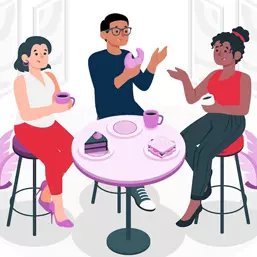
Many people refer this to be our “personal bubble”. Only the most personal of our connections are allowed access to this location. When an unwanted individual enters our personal bubble, whether it’s a stranger sitting next to us on an empty seat or a person who gets too near for comfort during a discussion, we instinctively step aside just a little bit to preserve our intimate distance from that person.
For the majority of talks with family, friends, and acquaintances, personal distance (18 inches to 4 feet) is utilized as a standard.
The social distance (4 to 12 feet) is the distance at which we feel most comfortable doing business, sitting in committee meetings, and engaging with strangers such as the hotel clerk, the store cashier, or the police officer who is issuing us a citation
When performing public ceremonies, speeches, big group gatherings, and class lectures at a distance of 12 to 25 feet, utilize the public distance (12 to 25 feet). When persons are separated by more than 25 feet, communication is often restricted to yelling and exaggerated nonverbal gestures to convey meaning.
The distance between you and other people varies based on the situation, the persons involved, and how you are feeling at the time of the conversation. In addition to proxemics distance and personal comfort, cultural variables play an essential role in shaping these outcomes.
The use of sign language
Sign language is a nonverbal mode of communication that is often utilized by people who are deaf or hard of hearing. It entails the use of the hands to produce symbolic movements that have special significance for the one doing them. When it comes to communicating with the deaf, sign language is taught at official learning institutions alongside other methods of communication such as braille.
Interpreting signaling
Generally speaking, a gesture is a nonverbal communication that is made using a particular portion of the body. Gestures range significantly from one place to another, as well as from one culture to another. We’ve compiled a quick list of gestures and their most popular interpretations in North America for your convenience.
| Gesture | Interpretation |
| Nodding head | Yes |
| Shaking head | No |
| Moving head from side to side | Maybe |
| Shrugging shoulders | Not sure; I don’t know |
| Crossed arms | Defensive |
| Tapping hands or fingers | Bored, anxious, nervous |
| Shaking index finger | Angry |
| Thumbs up | Agreement, OK |
| Thumbs down | Disagreement, not OK |
| Pointing index finger at someone/something | Indicating, blaming |
| Pointing middle finger (vertically) | Vulgar expression |
| Handshake | Welcome, introduction |
| Flap of the hand | Doesn’t matter, go ahead |
| Waving hand | Hello |
| Waving both hands over head | Help, attention |
| Crossed legs or ankles | Defensive |
| Tapping toes or feet | Bored, anxious, nervous |
What other gestures can you add to the list?
Brief check
Because nonverbal cues can mean more than spoken words, learn to use nonverbal communication passively.
The importance of nonverbal communication
(a) Nonverbal tactics have an almost instantaneous impact since the recipient is able to absorb them more quickly. Non-verbal methods, such as traffic signs and signals, are particularly beneficial in crucial circumstances because of their speed of conveyance and reaction.
(b) Visual nonverbal approaches assist verbal communication; maps, charts, and graphs are required for expressing information or plans relating to geography, places, data, and the majority of scientific disciplines, among others. A huge quantity of sophisticated information may be given in a compact fashion; one page can communicate information that would need many pages of words to express in words. It makes information readily visible at a glance, allowing for easier comparisons.
(c) The response to pictures and simple sounds is more potent than the response to words. It is more effective to show an agonizing cry than to tell a sad narrative; a film is more successful than a written text in evoking emotion. The news on television is more entertaining than the news on the radio.
(d) It is the most effective means of communicating information to persons who are illiterate. In order to warn people of poisonous substances, containers are labelled with a skull and cross-bones, and illiterate drivers may make do with non-verbal traffic signs. When explaining procedures to persons who may have difficulty following oral explanations, films might be employed. Non-verbal communication has the potential to transcend the barrier posed by language.
(e) Sign language enables the deaf and hard of hearing to communicate, study, and function in the workplace in the same way as physically normal people do.
Nonverbal communication serves a variety of purposes.
a) As an example, a warm greeting and a strong handshake may be used to support or complement spoken statements.
b) Negation of the verbal message.
c) Message substitution, which is the use of nonverbal communication in place of verbal communication, such as pointing.
d) Emphasis/intensification of the message, for example, smiling when you say, “It’s a pleasure to meet you.”
e) To regulate the message for example drop the voice to indicate the end of the turn or make eye contact with the following speaker to designate him or her.
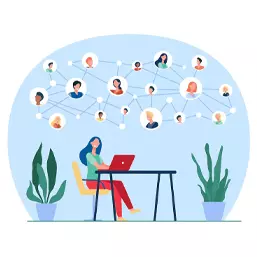
Practical Application
Sam and Lilly were tasked with running the food committee at the year-end company function. Usually, this wouldn’t be a problem, but they were having trouble communicating because Sam’s non-verbal communication was viewed as being negative by Lilly. Even though they were colleagues but they didn’t really know each other well as they worked in different departments. When no work was done until last minute, Lily brought up this issue to Sam.
Sam listened to Lily’s concern and realized that it was probably his non-verbal communication for the misunderstanding. In fact there was no serious issue between them. He immediately changed his posture and gestures to prove that he was active and interested to help Lily with the assigned task. Lily on the other hand discussed her reasoning behind her being upset and how Sam’s non-verbal communication showed his lack of interest. In the end, Sam and Lily were able to resolve their differences and were happy to complete the tasks they were given whilst on the food committee together.
The case goes to show that people’s initial impressions of you are something that happens all the time in your everyday life. To foresee social interaction and a feeling of order in a chaotic world, humans detect and generalize across various actions, appearances, and other personal attributes. Persons may draw conclusions about new people they encounter based on generalizations, preconceptions, and knowledge they have gained from society, even when they have just a limited amount of information.





